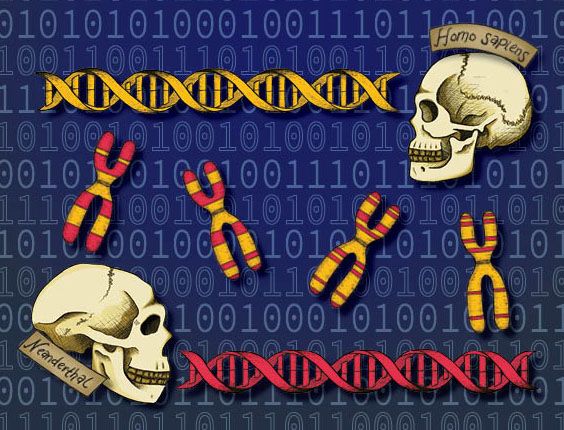DeadlY inheritance
Sex chromosomes influence lifespan
The mutant flies have just enough leg room. The temperature of their incubators is carefully tuned, humidity a comfortable sixty percent. Five thousand fruit flies are enjoying a Goldilocks standard of luxury. Their concierge, biologist Emily Brown, is waiting for them to die.
An alumnus of Doris Bachtrog's. lab, Professor of Integrative Biology at UC Berkeley, Brown created this fly spa to study the link between sex and ageing. Female fruit flies enjoy longer lives than their male counterparts. These flies aren't alone-most bird and mammal species have one sex that outlives the other. Researchers like Brown, now a Senior Scientist at NYU Medical Center, suspect this lifespan gap is caused by sex chromosomes. They just need a way to prove it.
Doing so is difficult. Animals of different sexes have different lifestyles, which affect ageing along with genetics. And no one quite understands the genetics of ageing. Unlike eye color or blood type, lifespan isn't a trait that can be pinned down to a handful of genes. And genes are only a fraction of an organism's DNA.
The function of genes is well-understood. Like books in a library, they hold blueprints for the proteins a cell needs to grow, survive and divide. The remaining DNA, known as heterochromatin, seems to be both library and librarian. Some elements are structural. Others monitor the genome, flagging genes that need to be read or re-shelved. And some heterochromatin isn't helpful. Like rogue librarians scribbling on pages, particularly repetitive sections of DNA can insert nonsense into genes.
As organisms age, they grow worse at stopping this troublesome DNA. Those with a Y chromosome do an especially dismal job, a feature that grabbed Brown's focus during her PhD. "I was interested in the consequences of having different sex chromosomes," says Brown. Rapid ageing might be one consequence-in every species with a lifespan gap, the shorter-lived sex has the equivalent of a Y chromosome.
This may be due to the composition of the Y chromosome, which contains great swathes of repetitive DNA. In some species, these sections make up almost the entire chromosome. This is risky-if even one element finds its way to a gene, it can do permanent damage. In contrast, the X chromosome is often densely packed with genes, with little space for repetitive elements, and tends to be much better behaved. If both sexes have the same total ability to protect their genomes, those defenses could quickly stretch thin if a Y chromosome is in the mix.
To test this theory, there's no lab rat better than the fruit fly-some variants have incredibly repetitive Y chromosomes. Another advantage is speed. If you want to study ageing, you need to wait for subjects to get old, so a fruit fly's seventy-day lifespan comes in handy. But Brown was also drawn to the species by the unusual role its Y chromosome plays in determining sex.
For mammals, an organism with a Y chromosome is male. However, a fruit fly can carry a Y chromosome and remain female. For these insects, sex is determined solely by the number of X chromosomes: one for male, two for female. Through careful cross-breeding, Brown created several strains of fly with abnormal numbers of chromosomes, including females with Y chromosomes and males without.
If the lifespan gap was caused only by differences in lifestyle between the sexes, this meddling would have no effect. But as Brown looked after the flies, checking on their vials daily and counting how many remained alive, she saw an entirely new relationship between sex and ageing emerge. "There's actually a really dramatic change," says Brown. When she added a Y chromosome to typically long-lived females, the flies aged rapidly. When she took the Y away from males, leaving them with a lone X chromosome, their odds of surviving shot up. "They just kept on living," says Brown. The worst-off flies were a set of males Brown bred with two Y chromosomes. On average these mutants only made it halfway through the lifespan of the X-only strain.
 As time passes, the flies with a Y chromosome (green and yellow) age faster, and die, before flies with fewer Y chromosomes (yellow) or no Y chromosomes (pink), regardless of the flies sex.
As time passes, the flies with a Y chromosome (green and yellow) age faster, and die, before flies with fewer Y chromosomes (yellow) or no Y chromosomes (pink), regardless of the flies sex.
The Y chromosome is toxic. It's the only way to explain the brief but luxurious lives of Brown's flies. But Brown and her colleagues are quick to acknowledge there is much more to lifespan than one troublesome chromosome. As Allison Nguyen, the PhD student continuing Brown's study, puts it, "We are only really studying one slice of this phenomenon called ageing." An animal's environment, what it eats, and when it mates all influence how long it will live. Since a human's' Y chromosome is not quite as repetitive as a fruit fly's (there are a couple more genes to cram in), it likely influences ageing much less than these lifestyle factors do. However, the toxicity of a more sophisticated Y chromosome still needs to be studied, and this is how Nguyen will use the fly spa next.
Andrea Herman is a graduate student in physics.
This article is part of the Fall 2020 issue.





